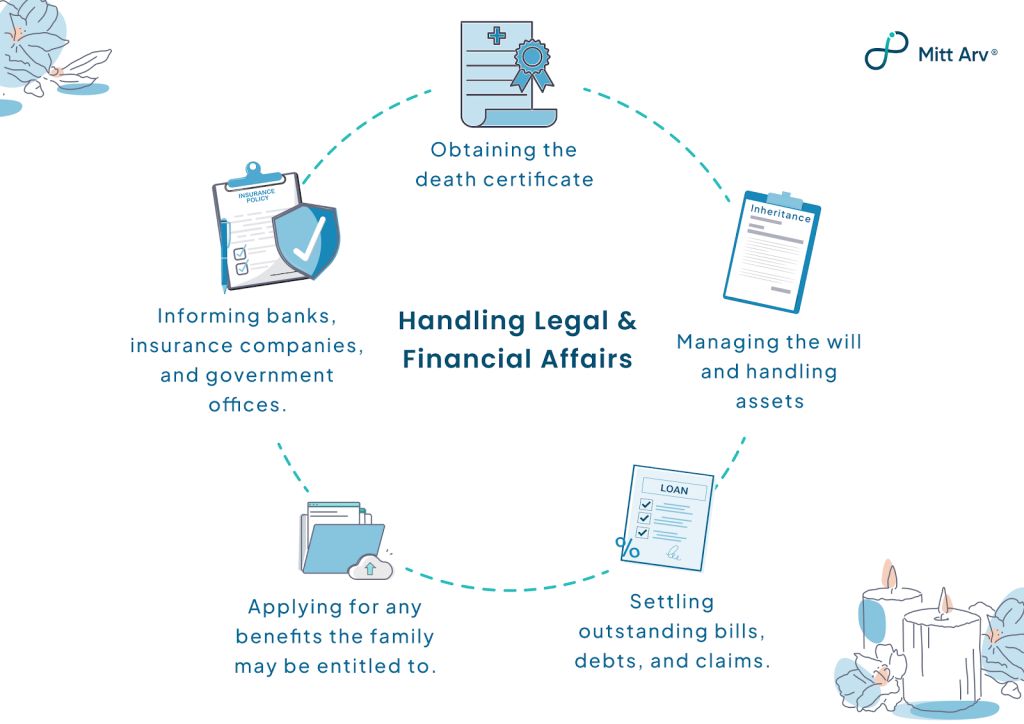
Losing someone you love is heartbreaking. Their absence is felt in every little moment, making the world seem different and life incomplete. In the midst of grief, even the thought of saying a final goodbye feels overwhelming. But how can a life so cherished be honored?
The pain may never fully fade, but the love and memories will always remain. Even if we are not ready and our hearts resist, there comes a moment when we have to say goodbye.
Giving a final tribute is more than a ceremony. It is a chance to honor a life, cherish memories and find comfort in togetherness.
If you are preparing for a loved one’s farewell, understanding the process can bring clarity and peace of mind. What if you had a guide to support you through this heart wrenching time? Let’s walk through this journey together step-by-step, in a way that feels embracing, helping you to have a heartfelt and meaningful goodbye.
Step 1: Letting the Right People Know
After a loved one’s passing, you may feel lost and unsure about what to do next. Take a moment to breathe and allow the emotions to settle. When you are ready, start by reaching out to close family and friends. Lean on someone to help make the calls, or simply be there as you find the right words.

Step 2: Burial or Cremation: A Deeply Personal Choice
One of the most challenging decisions you’ll face is choosing between burial and cremation. Sometimes, your loved one may have already shared their wishes, which makes things easier. If not, do what feels most meaningful to honor their memory. This decision shapes the rest of the funeral arrangements, including the cemetery, urn, or memorial setting.
Burial offers a permanent resting place and aligns with many traditions. It provides a sense of closure, but it can be costly and requires more planning.
Cremation is often more affordable, flexible and space saving, yet, it may lack a dedicated grave site and is not embraced by all cultures or religions.
Ultimately, the best choice depends on what feels most meaningful for you and your family.
Step 3: Finding the Right Funeral Home
A funeral home can take care of many practical arrangements, from handling the body to organizing the service. When choosing one, look for a place that makes you feel comfortable and at ease. Ask about pricing, services that are available, and how flexible they are with personal rituals. A good funeral home will guide you through the transportation, procession, and service arrangements with compassion. You deserve a team that treats your loved one with the same respect and kindness that you would.
Step 4: Planning A Meaningful Service
Beyond the rituals, the funeral service provides a space for family and friends to come together and support one another. Sharing memories and emotions, whether through words or quiet moments, helps remind everyone that they are not alone in their grief. A funeral service is more than just a gathering. It is a moment to honor and celebrate a life well lived. Choose a meaningful location, invite everyone to express their feelings, and include personal details like photos or favorite flowers. It’s a time to come together, find solace, and honor a loved one’s memory.
Step 5: Deciding on the Final Resting Place
Take your time to choose what feels right. Every decision carries deep meaning. How would you like to honor your loved one’s life?
If burial is the choice, selecting a meaningful cemetery and a headstone is the key. If cremation feels right, decide whether to keep the ashes in a cherished urn, scatter them in a special place or place them in a columbarium.

Whatever you decide, this moment is about love, remembrance, and honoring their legacy in a way that truly resonates with your heart.
See Also: Indian Funerals Overseas
Step 6: Handling Legal and Financial Affairs
Handling legal and financial matters may feel overwhelming, but it’s an important step. Some key tasks to focus on include:
- Obtaining the death certificate.
- Informing banks, insurance companies, and government offices.
- Managing the will (if applicable) and handling assets.
- Settling outstanding bills, debts, and claims.
- Applying for any benefits the family may be entitled to.

Organizing paperwork and managing a loved one’s belongings can be challenging during this time, so take it one step at a time and seek support if needed.
This is where Mitt Arv makes a real difference. With its secure Asset Vault, all essential documents, financial records, and legal paperwork are organized in one place, making the process smoother. The platform ensures that all your belongings/assets are handled according to your wishes. By planning with Mitt Arv, you can ease the burden on your family and ensure everything is taken care of in a seamless manner.

Step 7: Taking Care of Yourself and Your Family
After the ceremony, gathering with loved ones can bring comfort through shared memories and support. In the days ahead, allow yourself to grieve, lean on others, and seek help if needed. Healing isn’t linear, it is a path walked at your own pace.
Conclusion
A goodbye filled with love
Planning a funeral is not easy, but every decision comes from deep love and devotion. When you are making arrangements for someone dear, the goal is to honor a life well lived. It is also a time to handle legal, financial, and personal matters with care. Take your time, and remember, you are not alone in this journey.
